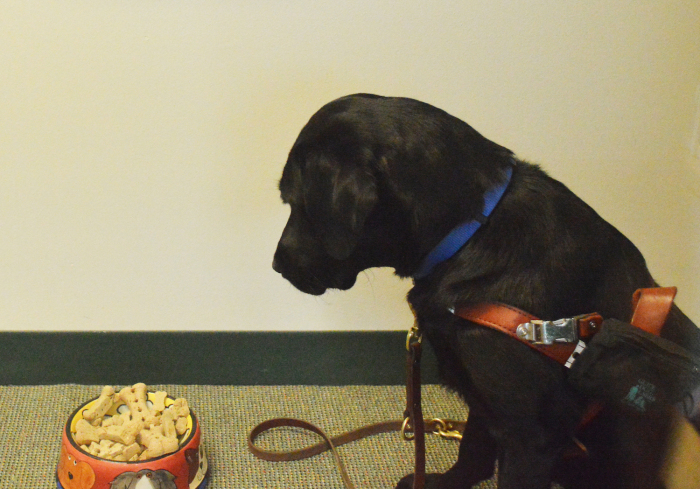Barks Blog
Dogs and Marshmallows

I’ve been interested in dogs and self-restraint for as long as I have trained dogs. So, several years ago, a friend and I applied an adapted version of the Marshmallow Test to her guide dog. Alberta passed with flying colors. Her current guide, Koala, also aced the test.
For decades, the Marshmallow Test has been a sort of shorthand for self-restraint; it was thought to predict all sorts of things, like whether a person would do well on SATs or succeed in saving enough for retirement.
In the spring, I noticed an article about how the Marshmallow Test doesn’t mean what we’ve all thought it did. It turns out that kids from well-off homes tend to have good results over the longer term and kids from poorer homes do not, regardless of their performance on the marshmallow test.
Koala and Alberta were both raised and educated at Guiding Eyes for the Blind, a top-notch guide dog school in Yorktown Heights, NY. They benefited from the organization’s excellent early puppy hood program, which offers enrichment (from a host of dedicated volunteers and staff) from the moment the puppies are whelped. They were raised in doting puppy raiser homes filled with treats and loving guidance — and rules and routines. They then received an excellent education.
So it’s not surprising that Alberta and Koala, who come from the doggy equivalent of one-percenter homes, did well. It now seems that the influencing factors are things like whether kids know they can count on having enough food or getting treats, even if they wait for them rather than grab what’s immediately available. This would apply to dogs as well.
A dog who knows she can trust her human to have her back, to feed her on time, to stick to a routine, to provide for her needs — that dog is more likely to show self-restraint than a dog who never knows if or when a meal might show up, whose water bowl is always empty, whose life is unpredictable and maybe scary. That dog is less likely to be anxious, too.
It’s possible (and highly recommended) to teach self-restraint, using cues like Wait and Leave It!, but some dogs just don’t seem to get it.
Dog trainers are constantly haranguing clients to be consistent with their dogs. Not surprisingly, this is probably the most important thing an owner can do for a puppy: Be consistent. Feed at the same time every day. Train the dog, offering lots of treats as rewards. Keep your dog’s days predictable and ensure that she can go outside when she needs to, that if something hurts, you will take care of it, that if she’s stressed, you will get her away from the situation. Even a dog from a less advantaged background can learn to trust a human who offers security and consistency.
Modeling and teaching this to clients might be the most valuable lesson a dog trainer can offer!
